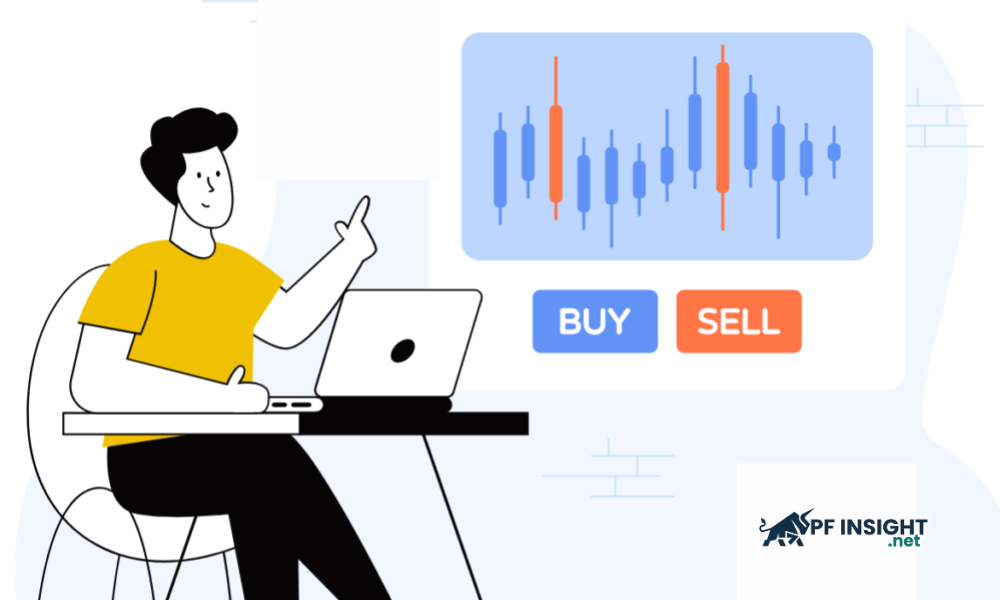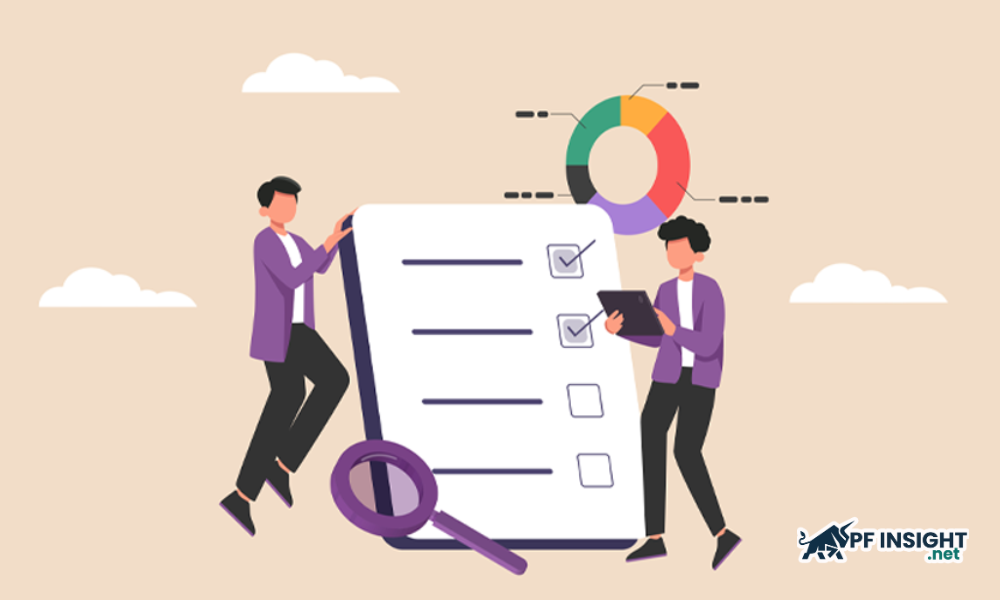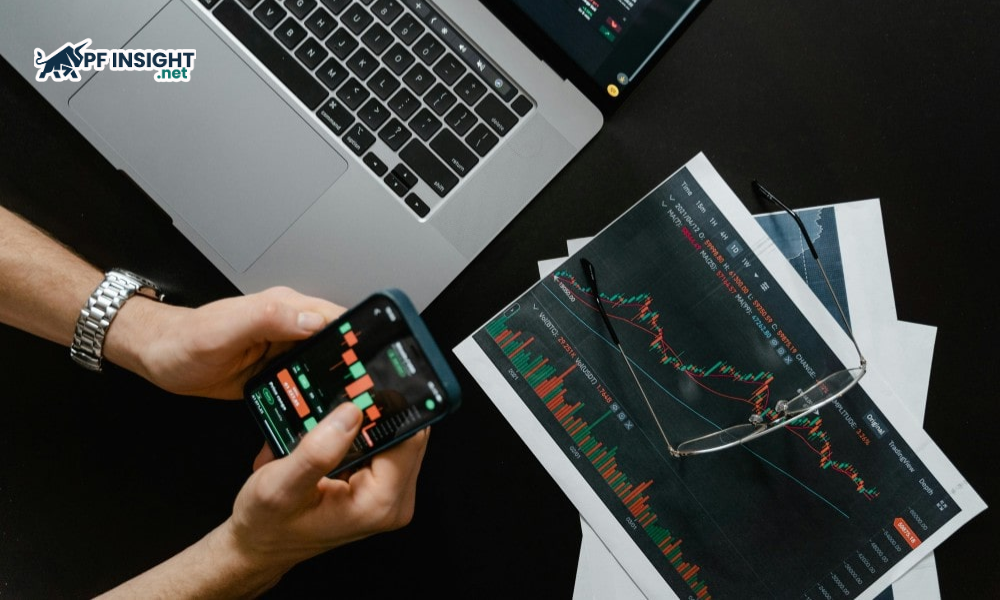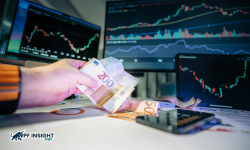Funding for trading is becoming a prominent trend among traders today, providing opportunities for skilled but capital-poor people to participate in the financial market. Through prop firms or investors, traders can receive capital to trade, share profits and develop their professional careers. This is a smart solution to optimize profit potential without having to invest too much personal capital.
- Prop firm risk management: essential tips for traders
- Prop firm support services: What to expect and how to choose
What is funding for trading?
Funding for trading is a financial support model in which prop firms or investors provide capital for traders to make transactions in financial markets such as Forex, stocks, commodities or cryptocurrencies. Traders do not need to use personal capital but can still trade on a large scale, and at the same time receive profit sharing based on results.
Popular forms of funding for trading
In the modern trading world, funding for trading is implemented in many different forms, providing traders with flexible access to capital. In addition to famous prop firms, there are also private investment funds or independent funding programs. Each form has its own characteristics, suitable for each trader’s experience and strategy.

Funding from proprietary trading firms
This form of funding for trading is the most popular among the trading community today. Prop firms act as funding units, allowing traders to trade in the real market without investing their own money. To qualify for funding, traders must complete an assessment test and demonstrate the ability to control risks and generate sustainable profits.
- How it works: Traders pay an initial fee to join the evaluation program. Once they achieve their target profit while maintaining their risk within the allowed range, they are granted a real capital account and receive a profit share of 70% – 90%.
- Advantages: Without using personal capital, traders can access large-scale accounts from $10,000 to $400,000 and are allowed to withdraw profits periodically every month, helping to optimize income without taking direct financial risks.
- Disadvantages: Strict regulations, easy to lose account if violating rules
Obtain trading capital through Introducing Brokers
Introducing Brokers (IBs) often partner with experienced traders by providing capital, trading tools, or access to highly leveraged accounts. In return, IBs benefit from commissions on the trading volume generated by the trader. If the trader maintains consistent performance and consistent profits over a long period of time, they may receive funding or a significant capital increase.
When participating in a funding for trading program, you should prioritize working with reputable exchanges with transparent evaluation systems. Adhering to a proven strategy helps you demonstrate your ability to control risks and generate stable profits. Once you have proven your ability, IBs can increase your funding level or expand your account size in the next stage.
- Advantages: IB provides professional platforms, tools and guidance to help traders grow long term. When traders maintain consistent profits, IB can increase the level of funding
- Disadvantages: Traders must maintain positive results over a long period of time. The quality of support and transparency depends on the reputation of the IB.
Funding through trading contests
Nowadays, many exchanges and financial institutions regularly organize trading competitions to discover and attract potential traders. This is an opportunity for traders to demonstrate their skills, strategic thinking and risk management ability. Those who achieve excellent results are often awarded funding for trading in the form of real capital or sign long-term cooperation contracts, opening up opportunities for sustainable career development.
- Advantages: There is no entry fee or it can be refunded, and it is a great opportunity to demonstrate your trading skills and attract attention from sponsors.
- Disadvantages: Competition in contests is high, with the requirement to achieve large profits in a short period of time, which does not reflect the ability to trade sustainably in reality.
Funding through crowd trading/Social funding
Crowd Trading and Social Funding are two related concepts that represent a new way for traders to access capital. This is where traders do not rely on a single financial institution but instead raise capital from a large network of individual investors through online platforms.
Traders can publicly share their performance and strategies to attract interest. If their trading performance is proven, investors will fund the trader’s trading account. In return, investors receive a profit share generated from the capital they contributed. This democratizes the process of finding funding, creating opportunities for talented traders who lack initial capital.
- Advantages: Easy to access, suitable for skilled but undercapitalized traders.
- Disadvantages: Platform-dependent risk, requires continuous proof of trading performance.
The process of receiving trading funding from a prop trading firm
Here are 5 steps for traders to get funding for trading from a proprietary trading firm:
Step 1: Choose a reputable proprietary trading company

When looking for funding for trading, you should start by researching feedback and real-life experiences from traders who have received funding. Evaluate the company’s transparency, how long they have been in the funding industry, and their history of paying out profits to traders. A reputable company with a clear payment history and fair policies will give you peace of mind during the cooperation process and optimize the opportunity to grow your funded account.
Next, you need to carefully review the terms of the funding company to ensure that it suits your personal trading style. Each company has its own regulations on risk management, drawdown or order holding time. Therefore, choose a place with flexible policies that are compatible with your strategy to easily pass the assessment round to receive funding for trading.
See more: Top prop firms 2025: best funded accounts & rules you need to know
Step 2: Choose the appropriate evaluation program package
Sponsoring companies often have different evaluation programs, each with its own profit targets, drawdown limits, and risk management rules. You should choose the program that best suits your experience, trading style, and risk tolerance. These challenges are designed with specific criteria to evaluate the trader’s performance and trading discipline.
Controlling drawdown levels
In funding for trading programs, controlling the drawdown limit is a key factor to protect the account from serious losses. Traders should set a fixed stop loss of about 2% of the account value for each transaction to comply with safety rules. At the same time, it is necessary to monitor risks in real time with the platform’s management tool, and set automatic alerts when the drawdown reaches 50% of the allowed limit, helping you to promptly reduce the order size or pause trading.
Achieve target profit
The required profit level will vary depending on the size of your account, usually ranging from a few hundred to a few thousand dollars per month. Focus on maintaining consistent performance, sticking to your risk rules, and trading with discipline to achieve your goals.
The core metrics that traders need to maintain during the funding for trading process include:
- Focus on making a steady profit of 0.5%–1% per trade instead of trying to achieve huge profits.
- Prioritize trading during the most active market hours to take advantage of high liquidity.
- Track and record detailed results of each command to evaluate average daily performance.
- Aim for a real profit of about 0.5% of your total account value per day.
- Apply a minimum risk/reward ratio of 1:2 to optimize profits and minimize risks.
- Maintain a win rate of at least 55% or more.
- Keep the profit factor above 1.5 to ensure efficiency.
- Limit maximum drawdown to less than 5% of total capital.
- Ensure that your average profit is higher than your average loss.
- Keep trading volume stable and consistent throughout the entire evaluation period.
Step 3: Complete the evaluation phase
In funding for trading, traders need to demonstrate consistency, effective risk control and strict trading discipline. Many people fail because of emotional decisions or lack of detailed planning, reducing their chances of receiving real capital and long-term development.

Transaction consistency
In funding for trading, consistency comes from applying a clear trading strategy. Traders should keep detailed records of the rules, including entry/exit points and position sizes. At the same time, monitor key performance indicators to evaluate effectiveness and maintain long-term funding.
- Win rate calculated on total number of transactions exceeding 100 orders.
- Compare your average profit per winning trade with your loss.
- Keep the drawdown to a maximum throughout the trade.
- Evaluate the risk/reward ratio on executed trades.
- Maintain a steady trading volume and monitor order frequency.
Before using real capital, test your strategy with backtesting and forward testing. Based on the results of data and performance metrics, adjust the strategy, avoid emotional decisions, ensure consistency and effectiveness in real trading.
Loss control
In funding for trading, risk management helps protect capital while maximizing profits. Traders should apply proven risk control methods, including loss limits, reasonable risk/reward ratios, and consistent position management.
- Set a fixed stop-loss of 1–2% of your account value for each order.
- Keep order volume below 5% of total account equity.
- Monitor the relationship between open positions to avoid overlapping risks.
- Calculate the overall risk on all open trades.
- Maintain a daily withdrawal limit of around 3–5% of total balance.
- Apply maximum leverage of 4:1 to control risk.
- Use profit targets to lock in profits in time.
Keep detailed records of each trade’s risk parameters in your trading journal. Review your metrics weekly to identify areas for improvement. Adjust your position size based on recent performance while maintaining a steady and consistent risk ratio.
Step 4: Get funded account
Upon completion of the assessment period, you will receive a funded trading account with real capital to start trading and build your personal performance profile. Managing this account requires strict adherence to performance metrics, risk management rules, and maintaining trading discipline to achieve sustainable success in funding for trading.
Increase capital used for each position
When funding for trading, determining position size is a core element of effective account management. Start with small orders, around 0.25 – 0.5% of your account value, and gradually increase to 1-2% as you demonstrate consistent profitability. During this process, closely monitor important factors such as overall risk, drawdown, and trading performance to optimize results while keeping your capital safe.
- Monitor the overall risk level of positions relative to total account equity.
- Determine the maximum position size based on the set stop loss.
- Keep risk per trade within 1% of total equity.
- Track the win rate corresponding to different position sizes.
- Adjust order size based on volatility and market conditions to optimize risk management.
|
Position Size Level |
Account % Risk | Max Daily Positions |
| Conservative | 0.25-0.5% |
3-4 trades |
|
Moderate |
0.5-1% | 2-3 trades |
| Aggressive | 1-2% |
1-2 trades |
Comply with the provisions of the assessment program
In funding for trading, compliance with the assessment program is a key factor in getting funded. Traders need to comply with trading rules, risk limits and performance requirements, ensuring a transparent profile and optimal opportunities to receive funded accounts.
- Only open orders during allowed trading hours.
- Record all entry and exit points in your trading journal.
- Adhere to daily loss limits to protect capital.
- Make sure to complete the minimum number of trading days per month.
- Report technical or platform issues immediately.
- Implement position holding time rules as required by the program.
| Program Requirement | Typical Range | Monitoring Method |
| Daily Loss Limit | 2-5% |
Real-time P&L tracking |
|
Monthly Profit Target |
5-10% | Account statements |
| Minimum Trade Days | 10-15 days |
Trading journal |
|
Maximum Hold Time |
1-5 days |
Position timer |
Step 5: Withdraw profits and increase trading size
When traders make profits in the funding for trading program, they can withdraw their money according to the company’s payment schedule, many units also support fast or instant payments. However, receiving funding is not just about overcoming challenges, it requires you to become a consistent trader, able to manage risks and trade in a disciplined and sustainable way.
The secret to quickly getting funding for trading

To conquer prop firm reviews and get funded accounts, traders must be fully prepared with trading strategies, strong mentality and effective risk management. Here are some tips to help improve the chances of success in trading.
- Focus on a stable trading strategy: To increase your chances of getting funding for trading, traders need to apply a stable and proven trading strategy. Choose a clear system with rules specific entry/exit commands, avoid making decisions based on emotions. Test your strategy throughbacktestingand account demo ensure that prop firm requirements are met, includingdrawdown limitand achieveprofit targetwithin the specified time frame.
- Keep drawdown under 5%: Prop firms usually set daily loss limits and maximum drawdowns to protect capital. Keeping drawdowns under 5% helps you stay disciplined and demonstrate risk management. Use reasonable position sizes, avoid overtrading, and always set appropriate stop-losses to trade safely and effectively.
- Use a demo account to practice before the funding exam: Before participating in the challenge, you should practice on a demo account to get familiar with the market conditions and specific regulations of each prop firm. Demo helps you test your strategy, adjust your mentality when facing a losing streak, and practice discipline – something that most traders fail in the evaluation rounds.
- Trading Journal to improve performance: Trading journal is an important tool to help you review the trading process, identify strengths and weaknesses and optimize strategies. Recording the reasons for placing orders, the results of each transaction and emotions during trading will help you gradually improve your skills and avoid repeating mistakes.
Conclude
Getting funding for trading is not just about passing assessments, but also about cultivating discipline, managing risk, and developing effective trading strategies. With PF Insight, you can gain knowledge, tips, and practical guidance to optimize your chances of getting funding and achieving long-term success in the financial markets.







